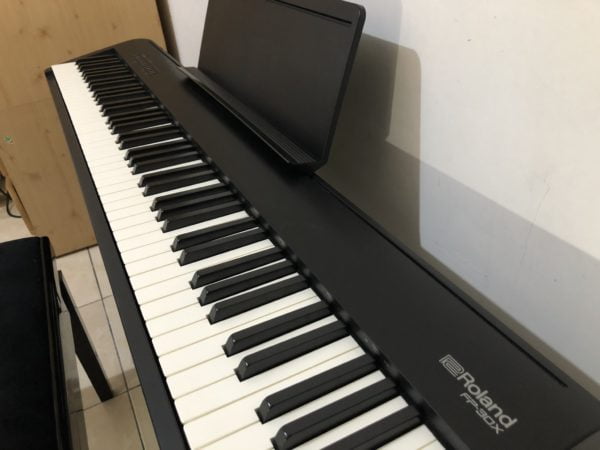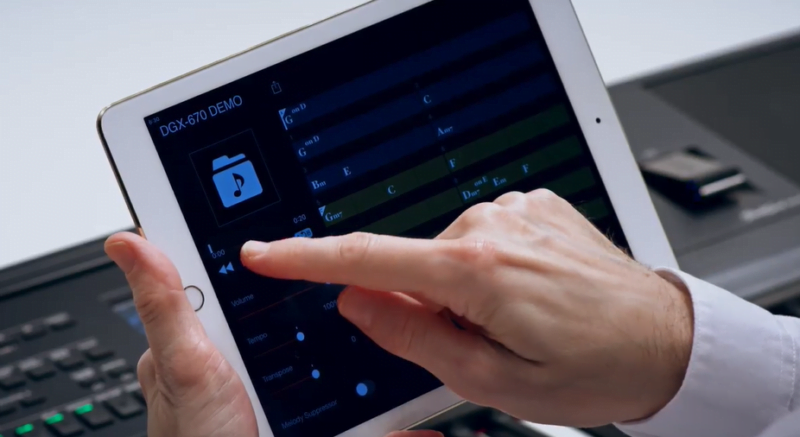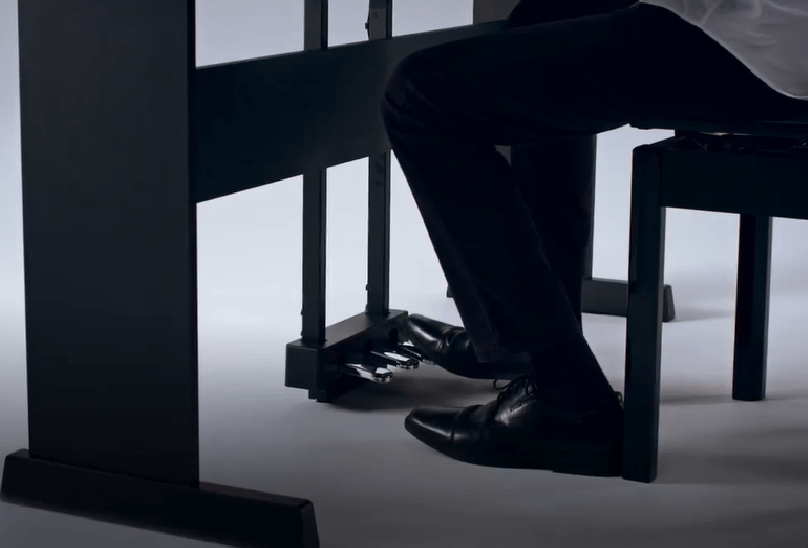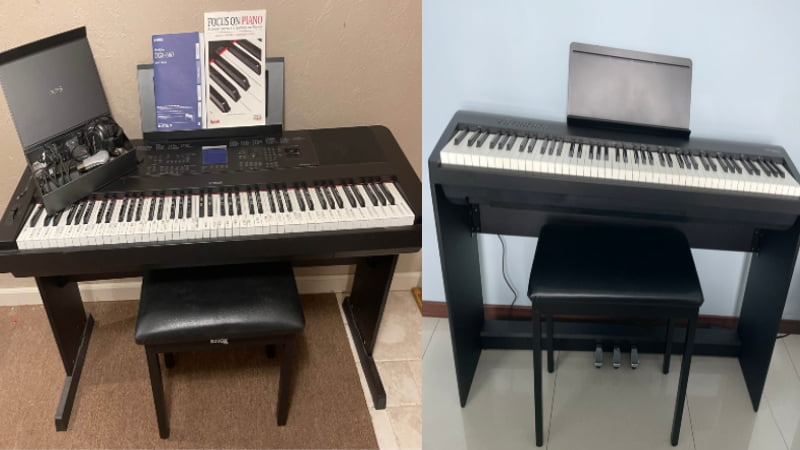Understanding your personal needs and intended use for a digital piano is a must to sensibly choose between the Yamaha DGX 670 Vs Roland FP 30x.
When shopping for a digital piano, it is very important to be true to your skill level, understand your personal needs and, even more importantly, know how you plan to use the instrument.
Beginner piano students can already do a lot with a $200 keyboard for a year or two before their growing competency requires more. On the other hand, music dilettantes who are into composing will need better specs which a low-cost, entry-level piece cannot give.
Two of the most distinguished digital pianos under a thousand bucks are Yamaha’s DGX 670 and Roland’s FP 30x. They are often compared because they’re at the $850 price range. However, these two are different in so many ways and intended for very specific users.
For those who are considering those two models, it’s a must to take the points mentioned earlier into consideration. And to help you get to know both better, continue browsing through the complete Yamaha DGX 670 Vs. Roland FP 30x comparative report below.
Yamaha DGX 670 Vs Roland FP 30x: Comparison Chart




Last update on 2025-04-22 / Affiliate links / Images from Amazon Product Advertising API
Yamaha DGX 670 Vs Roland FP 30x: Head to Head Comparison
The DGX 670 of Yamaha and the FP 30x of Roland are both marketed as portable digital pianos and sold at the $800 mark. But after going through the specs of each model, I am inclined to conclude that the two have very different uses.
The FP 30x, for me, is one of the best 88-key portable digital pianos made so far and Roland should give itself a hearty pat on the back for what they have created. For its fair pricing, this has all the traits seasoned players will love packed into a well-designed, minimalist, and stylish frame. Barring a few odd quirks that Roland needs to work on, it’s almost perfect.
The DGX 670, on the other hand, is loaded with features and functionalities hard to find in other models of the same pricing. Yamaha did reveal that this particular instrument is a hybrid of their entry-level P125, the arranger PSR SX600, and the A-grade Clavinova. And while they compromised on certain aspects (like the extreme heaviness and bulkiness of it), the DGX 670 sounds good and, more importantly, is user-friendly.
Just basing the winner on the richness of the specs, I would have to say that in the Yamaha DGX 670 Vs. Roland FP 30x match, the former tops the latter 3:1. However, it is still important to know how you are going to use it so you can maximize your money.
Feel and Playability
The Winner: Roland FP 30x

Yamaha has perfected the key action of their digital pianos, even incorporating their most renowned mechanism to their low-cost, entry-level pieces. But they penny-pinched in certain details for the DGX 670. The FP 30x, as I mentioned earlier, is one of the best. And Roland surely showcased their superiority in this particular aspect.
+Hammer Action
Aside from having fully-weighted keys, the DGX 670 makes use of the Graded Hammer System (GHS) which means that the bass keys on the left have more resistance than the trebles on the right. I had hoped that this would have three sensors to add more realism to the feel but it only has two which is good enough.
The FP 30x has the best key action, in my opinion. On top of the weightedness, Roland has somehow integrated double escapement in their system which made me feel like I am playing on a $50,000 grand piano.
+Touch Sensitivity
The two models tie in this particular aspect, having five types each which lets you have great variation in dynamism, especially if you’re already a pretty good keyboardist.
+Key Texture
Yamaha made the DGX 670 keys a bit matte, but it wasn’t enough to make me squeal in glee. Roland did quite well by subtly texturing their FP 30x key to emulate real ivory and ebony keys on an acoustic piece. The latter actually has the least slippery keys in all digital pianos of its price range.
Tone
The Winner: Yamaha DGX 670
The sound engine gives life to a digital piano. And while Roland beefed up their FP30x in this aspect, it’s just hard to beat Yamaha when they practically cross-bred the PSR SX600 and the Clavinova into the DGX 670.
+Tone Generator
Roland makes use of the SuperNATURAL technology as the main sound engine of the FP 30x. This replicates real acoustic sound including smooth transitions between different tones and even note decay.

Yamaha makes use of the CFX technology for their DGX 670. The company basically sampled the sound from their award-winning CFX concert grand that costs over $150,000 and incorporated this into their $800-piece. Their Clavinovas use this as well but if you can’t afford that, the DGX 670 is a great second option.
All in all, the two are pretty much tied in this aspect.
+Sound Library
This part is where Yamaha gets several more points over Roland.
The FP 30x has a total of 56 voices. It may not seem like a lot at its price range but it’s more than what a gig-ing musician would need as it covers a whole lot of music genres. The only complaint I have is that it’s hard to choose the voice without the help of an app, which is pretty inconveniencing.
Because the DGX 670 is an arranger, it has a whopping 600 voices and 263 styles with 13 variations for each. And on top of the awesome piano sounds, I am also in awe of their harpsichord, sax, and guitars which sound even better with the ‘super articulation’ effect.
Piano Functions and Features
The Winner: Yamaha DGX 670
As much as I love Roland’s FP 30x for what it is, I really have to award this whole chapter to Yamaha’s DGX 670. It’s hard to beat the highlights of three Yamaha digital pianos all incorporated in just one piece.
I also have to give props to Yamaha for putting a 4.3-inch built-in screen right beside the well-laid out buttons which makes re-configuration of the hundreds of features and functions easier.
+Effects
Both the DGX 670 and the FP 30x have the basic effects like Reverb, string damper, key-off resonance, and lid position configuration. Yamaha does have more. Plus, these can be set-up right on the LCD screen vis-a-vis the Roland which almost always requires the app.
+Recording Capability
The two have built-in recording systems which can be transferred to and edited in external software as high digital formats. Roland, unfortunately, can only record one at a time. Yamaha can record over a dozen and has unlimited user registration bands.
+Connectivity
Both the DGX 670 and the PF 30x have the must-haves when it comes to connectivity, from headphones to damper pedals.
I am glad that Roland has two headphone ports of different sizes (3.5mm and ¼”) and has a quarter-inch stereo output for amplification. Yamaha, on the other hand, has two inputs for the pedals – one specifically for a three-pedal system. It also has an input for a microphone, making the DGX 670 a complete entertainment system.

The two can be connected to their respective apps which gives users more control over the features and functions of their pianos. Roland has the Piano Partner and Yamaha has the Smart Pianist. But at the end of the day, it’s hard to beat the built-in software with screen on the DGX 670.
+Speaker System
Roland’s FP 30x with its 2x11W built-in speakers beats Yamaha’s DGX 670 2x6W speakers on board. But to be honest, the speaker systems on both are just above average. The two will sound better with high-quality external speaker-amplifiers or when using headphones.
Yamaha DGX 670 Vs Roland FP 30x: The Similarities
Since these two models are quite different from each other, I was surprised to find that they do have a few similarities, albeit almost inconsequential ones.
For one, the two have the same max polyphony count at 256. This is great because even intermediate players can enjoy playing fast and high-note density pieces that require sustains. Also, beginners can use these far longer than entry-level, less than a hundred-polyphony count ones.
They also share the same basic playing modes. Both Yamaha’s and Roland’s models can do layering, splitting, and lesson modes. The DGX 670 does have more specific components for each mode.
The two usually share the same accessories included in the box – AC adaptors, cords, music stands, basic pedals, etc. Do check this, though, because outlets have different sets of inclusives with their digital pianos.
Yamaha DGX 670 Quick Rundown
- CFX Stereo Sampling faithfully reproduces the sound of Yamaha's flagship CFX Full Concert Grand.
- GHS weighted action is heavier in the low keys and lighter in the high keys, just like an acoustic piano. The special matte black key tops are designed to absorb moisture and remain tactile after extended use without becoming slippery.
- Adaptive Style automatically shifts between the Main Style Variations by changing your velocity and number of notes played.
- Unison and Accent function adds a doubled voice to your melody line and musical "hits" when you accent your notes.
- Smart Chord lets you play great-sounding chords from simple Pop triads to complex jazz 7th chords with just a few fingers.
Last update on 2025-04-22 / Affiliate links / Images from Amazon Product Advertising API
Roland FP 30x Quick Rundown
- Balancing affordability with superior performance, the FP-30X is the sweet spot of Roland’s FP-X series.
- This slim and stylish portable piano builds on the entry-level FP-10 with an enhanced sound engine, more powerful onboard speakers, and increased polyphony.
- Optional KSC-70 stand and KPD-70 three-pedal unit for upright performance and traditional playing styles
- SuperNATURAL Piano sound engine for rich expression, from pianissimo to fortissimo
- Includes a wide variety of onboard sounds for every musical genre, including electric pianos, organs, strings, and synthesizers
Last update on 2025-04-22 / Affiliate links / Images from Amazon Product Advertising API
Product Videos
Related Articles to Yamaha Dgx 670
- Yamaha DGX-670 vs YDP 144: Finding the Best Digital Piano
- Yamaha DGX 670 vs Casio PX S3000: Which Piano Comes Out on Top?
- Yamaha DGX 670 vs Roland FP 60x: Which Piano Comes Out on Top?
- Yamaha P125 vs DGX 670: Which Piano Comes Out on Top?
- Yamaha DGX 670 Vs P515: Which Gives You Bang For Your Buck?
- Yamaha DGX 670 Vs 660: The Distinct Difference In Details You Need To Know About
Related Articles to Roland Fp 30x
References:
- Yamaha DGX 670: https://usa.yamaha.com/products/musical_instruments/pianos/p_series/dgx-670/specs.html#product-tabs
- Roland FP30x: https://www.roland.com/us/products/fp-30x/features/
Lulacruza is an electronic folk duo operating at the junction of the hypermodern and the ancient. Our music weaves together hypnotic female singing, South American folk instruments and electronic processing, while channeling pulsating waves from the source of creation.
Lalucruza is also a community where you can connect with other music lovers to collaborate, exchange ideas and share knowledge. A platform for who wants to learns the basics of playing piano, guitar, drum masters’ technique, etc.. is the premise of our website.
